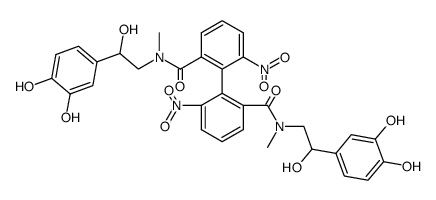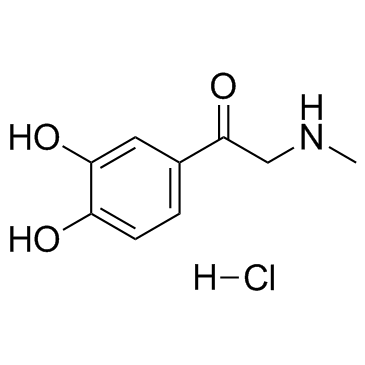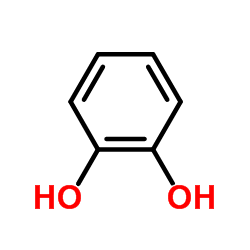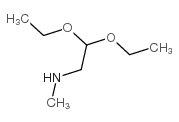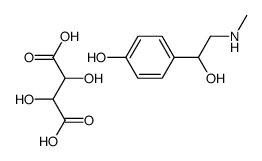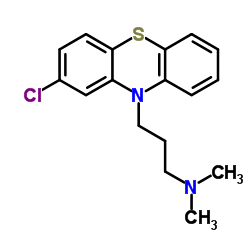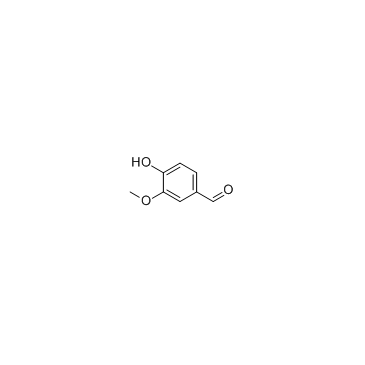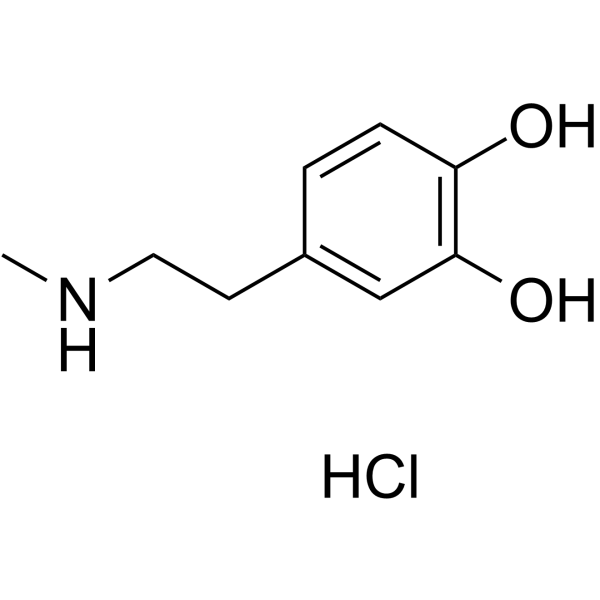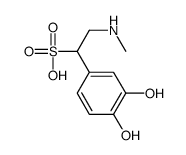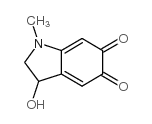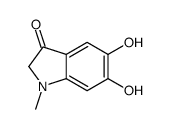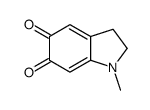329-65-7
| Name | adrenaline |
|---|---|
| Synonyms |
EINECS 206-347-6
4-[1-Hydroxy-2-(methylamino)ethyl]benzene-1,2-diol 4-(1-Hydroxy-2-(methylamino)ethyl)benzene-1,2-diol 1,2-Benzenediol, 4-[1-hydroxy-2-(methylamino)ethyl]- dl-Epinephrine Epinephrine dl- adrenaline rac Epinephrine MFCD00063027 1-1-(3,4-Dihydroxyphenyl)-2-methylaminoethanol (±)-3,4-Dihydroxy-a-[(methylamino)methyl]benzyl Alcohol (±)-Epinephrine Drenamist UNII:GR0L9S3J0F (±)-Adrenaline 4-(1-Hydroxy-2-(methylamino)ethyl)-1,2-benzenediol 4-[1-Hydroxy-2-(methylamino)ethyl]-1,2-benzenediol DL-Adrenalin Benzyl alcohol, 3,4-dihydroxy-α-((methylamino)methyl)-, (-)- (±)-4-[1-Hydroxy-2-(methylamino)ethyl]-1,2-benzenediol (±)-4-(1-Hydroxy-2-(methylamino)ethyl)-1,2-benzenediol 1,2-Benzenediol, 4-(1-hydroxy-2-(methylamino)ethyl)- Epinephrin Racepinephrine Racemic epinephrine Asthmanefrin |
| Description | DL-Epinephrine is the racemate of epinephrine. L-Epinephrine is a hormone secreted by the medulla of the adrenal glands. L-Epinephrine is an α-adrenergic and β-adrenergic receptor agonist. |
|---|---|
| Related Catalog | |
| In Vivo | A 25 microliter volume of a 1-% L-epinephrine borate solution applied on the cornea of one eye in 12 monkeys reduces blood flow through the iris and the ciliary body by 59% and 20%, respectively, compared to the untreated control eyes[1]. Epinephrine is a direct-acting sympathomimetic α-adrenergic and β-adrenergic agonist with cyclic adenosine monophosphate-mediated, complex, bidirectional pharmacologic effects on many target organs[2]. In young adult rats, endogenous release of epinephrine facilitates stable memory formation for temporally associated events. Epinephrine enhances memory in young adult rats, in part, by increasing blood glucose levels needed to modulate memory[3]. Epinephrine is the primary drug administered during cardiopulmonary resuscitation (CPR) to reverse cardiac arrest. Epinephrine increases arterial blood pressure and coronary perfusion during CPR via alpha-1-adrenoceptor agonist effects[4]. |
| Animal Admin | Rats: For the immunohistochemistry experiments, rats receive an immediate post-training subcutaneous injection of saline (0.9%), glucose (250 mg/kg), or epinephrine (0.1 mg/kg) and are then returned to the holding cage[3]. |
| References |
[4]. Callaway CW, et al. Epinephrine for cardiac arrest. Curr Opin Cardiol. 2013 Jan;28(1):36-42. |
| Density | 1.3±0.1 g/cm3 |
|---|---|
| Boiling Point | 413.1±40.0 °C at 760 mmHg |
| Melting Point | 197 °C (dec.)(lit.) |
| Molecular Formula | C9H13NO3 |
| Molecular Weight | 183.204 |
| Flash Point | 207.9±17.9 °C |
| Exact Mass | 183.089539 |
| PSA | 72.72000 |
| LogP | -0.63 |
| Vapour Pressure | 0.0±1.0 mmHg at 25°C |
| Index of Refraction | 1.608 |
| Storage condition | 2-8°C |
| Water Solubility | Sparingly soluble |
|
Section I.Chemical Product and Company Identification Chemical Name DL-Adrenaline Portland OR SynonymDL-Epinephrine Chemical FormulaC9H13NO3 CAS Number329-65-7 Section II.Composition and Information on Ingredients Toxicology Data Chemical NameCAS Number Percent (%)TLV/PEL DL-Adrenaline329-65-7Min. 98.0 (T) Not available.Rat LD50 (intravenous) 0.07 mg/kg Mouse LD50 (intraperitoneal) 7.8 mg/kg Mouse LD50 (intravenous) 3.4 mg/kg Section III. Hazards Identification Acute Health EffectsToxic if ingested or inhaled. Avoid prolonged contact with this material. Overexposure may result in serious illness or death. Irritating to eyes and skin on contact. Inhalation causes irritation of the lungs and respiratory system. Inflammation of the eye is characterized by redness, watering, and itching. Skin inflammation is characterized by itching, scaling, reddening, or, occasionally, blistering. Follow safe industrial hygiene practices and always wear proper protective equipment when handling this compound. Chronic Health EffectsCARCINOGENIC EFFECTS : Not available. MUTAGENIC EFFECTS : Not available. TERATOGENIC EFFECTS : Not available. DEVELOPMENTAL TOXICITY: Not available. Repeated exposure to an highly toxic material may produce general deterioration of health by an accumulation in one or many human organs. Section IV.First Aid Measures Check for and remove any contact lenses. In case of contact, immediately flush eyes with plenty of water for at least 15 Eye Contact minutes. Get medical attention. In case of contact, immediately flush skin with plenty of water for at least 15 minutes while removing contaminated clothing Skin Contact and shoes. Wash clothing before reuse. Thoroughly clean shoes before reuse. Get medical attention immediately. If the victim is not breathing, perform mouth-to-mouth resuscitation. Loosen tight clothing such as a collar, tie, belt or Inhalation waistband. If breathing is difficult, oxygen can be administered. Seek medical attention if respiration problems do not improve. IngestionINDUCE VOMITING by sticking finger in throat. Lower the head so that the vomit will not reenter the mouth and throat. Loosen tight clothing such as a collar, tie, belt or waistband. If the victim is not breathing, perform mouth-to-mouth resuscitation. Examine the lips and mouth to ascertain whether the tissues are damaged, a possible indication that the toxic material was ingested; the absence of such signs, however, is not conclusive. Section V.Fire and Explosion Data Not available. May be combustible at high temperature.Auto-Ignition Flammability Flash PointsFlammable LimitsNot available. Not available. Combustion ProductsThese products are toxic carbon oxides (CO, CO2), nitrogen oxides (NO, NO2). Fire Hazards Not available. Risks of explosion of the product in presence of mechanical impact: Not available. Explosion Hazards Risks of explosion of the product in presence of static discharge: Not available. Fire Fighting Media and Instructions Continued on Next Page DL-Adrenaline SMALL FIRE: Use DRY chemical powder. LARGE FIRE: Use water spray, fog or foam. DO NOT use water jet. Consult with local fire authorities before attempting large scale fire-fighting operations. Section VI.Accidental Release Measures Spill CleanupToxic material. Teratogenic material. Irritating material. Light sensitive material. Heat sensitive material. Stop leak if without risk. DO NOT get water inside container. DO NOT touch spilled material. Use water spray to reduce Instructions vapors. Prevent entry into sewers, basements or confined areas; dike if needed. Eliminate all sources of ignition. Consult federal, state, and/or local authorities for assistance on disposal. Section VII. Handling and Storage TOXIC. TERATOGEN. IRRITANT. LIGHT SENSITIVE. HEAT SENSITIVE. REFRIGERATE. Keep locked up. Keep away Handling and Storage from heat. Mechanical exhaust required. When not in use, tightly seal the container and store in a dry, cool place. Avoid Information excessive heat and light. DO NOT ingest. Do not breathe dust. Wear suitable protective clothing. If ingested, seek medical advice immediately and show the container or the label. Treat symptomatically and supportively. Always store away from incompatible compounds such as oxidizing agents, acids. Section VIII. Exposure Controls/Personal Protection Use process enclosures, local exhaust ventilation, or other engineering controls to keep airborne levels below recommended Engineering Controls exposure limits. If user operations generate dust, fume or mist, use ventilation to keep exposure to airborne contaminants below the exposure limit. Splash goggles. Lab coat. Dust respirator. Boots. Gloves. A MSHA/NIOSH approved respirator must be used to avoid Personal Protection inhalation of the product. Suggested protective clothing might not be sufficient; consult a specialist BEFORE handling this product. Exposure LimitsNot available. Section IX. Physical and Chemical Properties Solid. (Crystal, powder. Pale yellow -Solubility Physical state @ 20°CNot available. greyish yellow red.) Not available. Specific Gravity Molecular Weight183.20Partition CoefficientNot available. Boiling PointNot available.Not applicable. Vapor Pressure Melting Point197°C (386.6°F)Vapor DensityNot available. Not available.Not available. Refractive IndexVolatility Critical TemperatureNot available.OdorNot available. Not available.Not available. ViscosityTaste Section X.Stability and Reactivity Data This material is stable if stored under proper conditions. (See Section VII for instructions) Stability Conditions of InstabilityAvoid excessive heat and light. IncompatibilitiesReactive with oxidizing agents, acids, acid chlorides, acid anhydrides. Section XI. Toxicological Information RTECS NumberDO2975000 Eye Contact. Ingestion. Inhalation. Routes of Exposure Rat LD50 (intravenous) 0.07 mg/kg Toxicity Data Mouse LD50 (intraperitoneal) 7.8 mg/kg Mouse LD50 (intravenous) 3.4 mg/kg CARCINOGENIC EFFECTS : Not available. Chronic Toxic Effects MUTAGENIC EFFECTS : Not available. TERATOGENIC EFFECTS : Not available. DEVELOPMENTAL TOXICITY: Not available. Repeated exposure to an highly toxic material may produce general deterioration of health by an accumulation in one or many human organs. Toxic if ingested or inhaled. Avoid prolonged contact with this material. Overexposure may result in serious illness or death. Acute Toxic Effects Irritating to eyes and skin on contact. Inhalation causes irritation of the lungs and respiratory system. Inflammation of the eye is characterized by redness, watering, and itching. Skin inflammation is characterized by itching, scaling, reddening, or, occasionally, blistering. Follow safe industrial hygiene practices and always wear proper protective equipment when handling this compound. Continued on Next Page DL-Adrenaline Section XII.Ecological Information EcotoxicityNot available. Not available. Environmental Fate Section XIII. Disposal Considerations Recycle to process, if possible. Consult your local regional authorities. You may be able to dissolve or mix material with a Waste Disposal combustible solvent and burn in a chemical incinerator equipped with an afterburner and scrubber system. Observe all federal, state and local regulations when disposing of the substance. Section XIV. Transport Information DOT ClassificationDOT CLASS 6.1: Toxic material. PIN Number Proper Shipping NameToxic solid, organic, n.o.s. II Packing Group (PG) DOT Pictograms Section XV. Other Regulatory Information and Pictograms TSCA Chemical InventoryThis product is NOT on the EPA Toxic Substances Control Act (TSCA) inventory. The following notices are required by 40 CFR 720.36 (C) for those products not on the inventory list: (EPA) (i) These products are supplied solely for use in research and development by or under the supervision of a technically qualified individual as defined in 40 CFR 720.0 et sec. (ii) The health risks of these products have not been fully determined. Any information that is or becomes available will be supplied on an MSDS sheet. WHMIS ClassificationCLASS D-1B: Material causing immediate and serious toxic effects (TOXIC). On DSL. (Canada) EINECS Number (EEC) 206-347-6 EEC Risk StatementsR23/24/25- Toxic by inhalation, in contact with skin and if swallowed. R36/37/38- Irritating to eyes, respiratory system and skin. SECTION 16 - ADDITIONAL INFORMATION N/A |
CHEMICAL IDENTIFICATION
HEALTH HAZARD DATAACUTE TOXICITY DATA
|
| Hazard Codes | T:Toxic; |
|---|---|
| Risk Phrases | R24;R36/37/38 |
| Safety Phrases | S26-S36/37-S45 |
| RIDADR | UN 2811 6.1/PG 2 |
| WGK Germany | 3 |
| RTECS | DO2975000 |
| Packaging Group | III |
| Hazard Class | 6.1(b) |
| HS Code | 2922509090 |
|
~% 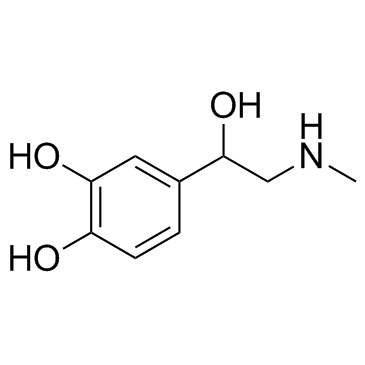
329-65-7 |
| Literature: DE524717 , ; Fortschr. Teerfarbenfabr. Verw. Industriezweige, vol. 17, p. 2515 |
|
~55% 
329-65-7 |
| Literature: Muller; Keil; Gerhard Tetrahedron, 1986 , vol. 42, # 5 p. 1529 - 1532 |
|
~% 
329-65-7 |
| Literature: Tetrahedron, , vol. 42, # 5 p. 1529 - 1532 |
|
~% 
329-65-7 |
| Literature: Tetrahedron, , vol. 42, # 5 p. 1529 - 1532 |
|
~% 
329-65-7 |
| Literature: Annali di Chimica (Rome, Italy), , vol. 41, p. 711,713 Zhurnal Obshchei Khimii, , vol. 28, p. 2530,2536 J. Gen. Chem. USSR (Engl. Transl.), , vol. 28, p. 2566,2570 |
|
~% 
329-65-7 |
| Literature: Chemische Berichte, , vol. 56, p. 855 DE360607 ; Fortschr. Teerfarbenfabr. Verw. Industriezweige, vol. 14, p. 1277 DE373286 ; Fortschr. Teerfarbenfabr. Verw. Industriezweige, vol. 14, p. 1278 |
|
~% 
329-65-7 |
| Literature: Tetrahedron, , vol. 47, # 27 p. 5019 - 5024 |
|
~% 
329-65-7 |
| Literature: Organic and Biomolecular Chemistry, , vol. 6, # 24 p. 4609 - 4614 |
|
~% 
329-65-7 |
| Literature: Naunyn-Schmiedebergs Archiv fuer Experimentelle Pathologie und Pharmakologie, , vol. 193, p. 440,445 Pr.Soc.exp.Biol.Med., , vol. 45, p. 52 |
| Precursor 8 | |
|---|---|
| DownStream 10 | |
| HS Code | 2922509090 |
|---|---|
| Summary | 2922509090. other amino-alcohol-phenols, amino-acid-phenols and other amino-compounds with oxygen function. VAT:17.0%. Tax rebate rate:13.0%. . MFN tariff:6.5%. General tariff:30.0% |

